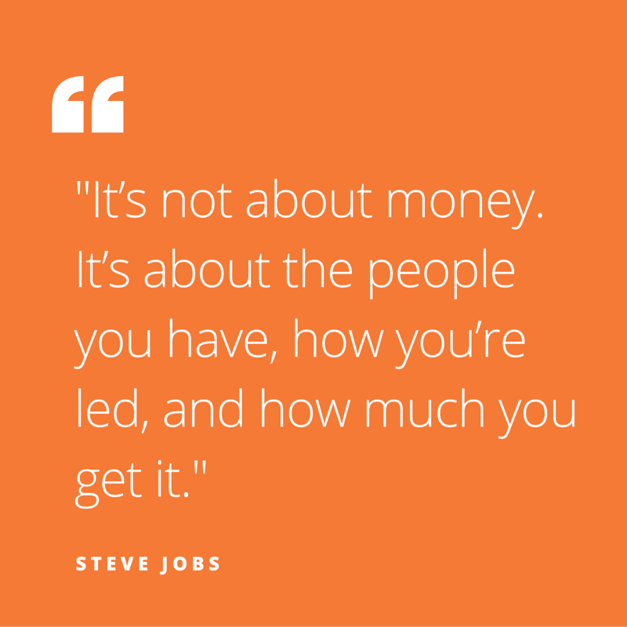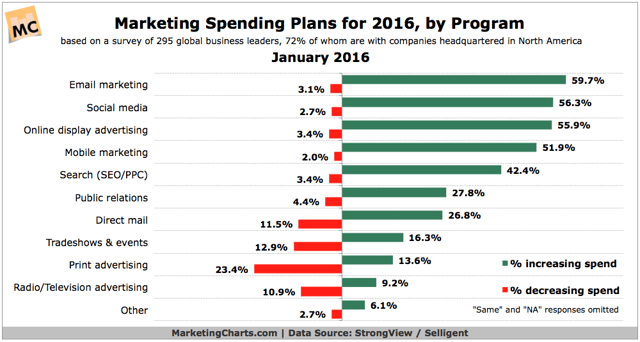What is a reasonable budget, and how should I spend it to achieve maximum ROI? This question is on top of most CMO:s agendas. Here we share some fresh insights on marketing budget allocation.

In our previous blog post “How big should my marketing budget be?” we elaborated on a reasonable marketing investment in relation to your revenue.
How should you allocate your marketing spend? We explored some recent trends in a poll done by Selligent and StrongView.
Engagement, integration, and data are core themes in the 2016 results. “Increasing subscriber engagement” is by far the most important marketing initiative for 2016 at 34% – more than double the second most important initiative “improving segmentation and targeting.”
Marketers chose “improving data analysis to better understand customer context” as the third most important initiative. Brands’ ongoing struggle with data and channel integration was evident in the top 2016 challenge – “leveraging customer data from multiple channels and data sources”.

From a touch point perspective we see that 40-60% of companies intend to increase spend for Email marketing, Offsite communities (a.k.a. Social Media), Display advertising, Mobile and Search. Only a minor share of the surveyed companies intend to decrease spend within these areas.
There are two areas where a larger share of the respondents intend to decrease rather than increase spend; Print advertising and Radio/Television advertising.
On CEB:s Sales/Service blog more insight on this matter is provided. One of the top four priorities CMO:s should consider is “rethinking your marketing campaigns”. While the rise of online and social media may have revolutionised marketing, it hasn’t fundamentally changed people’s view of marketing communications (marcomm) campaigns: people are only willing to listen if they find the message relevant or interesting. What’s more, people can now avoid far more advertising than they ever could before and, if they think something is particularly bad, tell their friends and followers about it.
The trade-off between the need to create appealing content and actually sell products led CEB to launch an extensive marcomm benchmarking survey. The results show that the most well received marcomm campaigns did not necessarily meet consumers’ expectations, such as being highly personalised or emotionally engaging. The characteristics that most stand out are those that are “culturally disruptive” or that reframe consumers’ beliefs and break conventions (e.g. challenging a truth held as universal or taking a side in a high-profile social debate – such as vodka brands, Smirnoff and Absolut, supporting gay marriage).
The two surveys highlight a clear trend: Marketing budgets are increasingly allocated to methods and channels that support potential customers with solving their challenges and provide the notion that you as a company know how it is to be in the client's position.
If you would like to discuss this topic more thoroughly, feel free to








